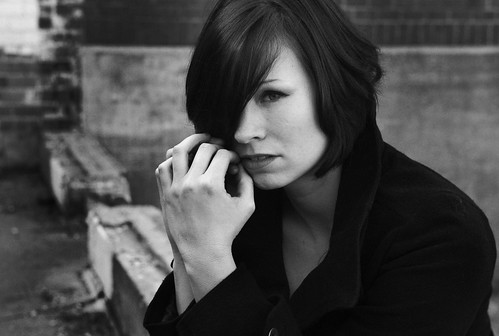Ed S.
Member
I have a Kiev-3, a Kiev-4, a J-3, a couple of J-8s, a Helios-103 and a Menopta (aparently identical to the Helios-103 except for the nameplate). I've had good results with all of these lenses, but I also bought from reputable dealers. But I also use either an SLR (35mm and MF) or a view camera for very sharp focus and high-resolution photographs.
From doing a lot of reading, it seems that the '53 and earlier J-3s and J-8s may be the best ones to get, and that '58-'61 are the best years for J-9s and J-11s, as the Soviet optics industry hit a high point then. But no mention of J-3 or J-8 quality is made. I'm uncertain about the J-12. But this is based on me piecing statements and opinions together from several different sources. Perhaps there's a test published somewhere.
The Helios-103/Menopta (50/1.8) is apparently an update to the J-8, and possibly only in Kiev/Contax mount; better resolution and similar, maybe better, contrast. I think that they're only slightly more expensive than the J-8. Avoid the "rare" listings, and the "10 lenses" listings (unless you want 10 lenses).
Dante Stella has an interesting article on the Contax-Kiev and Leica-Zorki lens "compatibility" questions; Section 3 "Ivan the Incompatible" seems to clarify things.
The J-3 and J-8, and the others of the Jupiter series are pre-'60s designs (possibly reformulated in the '60s). Compating their performance to same-era designs is a reasonably useful activity. A comparison to later designs is less useful, the results are usually never in question.
Cost is the flip side of this coin: for the cost of a Noctilux or a even a Summicron, obtaining a complete set of FSU lenses and camera body (of your choice, and all professionaly reworked) seems easily possible, and with money left over.
I once had an analogous debate, some years ago, of daily/weekly planner (with pencil) vs. Palm (with stylus). After hearing much noise about the advantages of the Palm, I then beat my planner against a table edge several times, then opened it up and noticed that all the numbers and information within were still correct and accesable.
A similar debate can be performed with Zeiss/Nikon/... elites when discussing equipment capabilities, using your FSU equipment (I've only come close twice to this): remove your J-8, DISCRETELY SWITCH IT FOR A GOLF BALL, then THROW THE GOLF BALL AS FAR AS YOU CAN. Invite your opponent to do the same with his Nikkor.
If necessary, go to Step 2: What is the ultimate product of photography? For some of us, me included, the gear itself is a major item, but an image, either on paper or on a monitor, is the final product, the one on which our skills, ability and whatever are judged. In my case, a Summicron won't help.
I'm a hobbyist photographer; I don't make money at photography, so my outlook is very different from a professional. If I really need low-light ability, I'll find a way to attach a camera to my 90/1.0 or my F/0.68 9.25"D lenses.
From doing a lot of reading, it seems that the '53 and earlier J-3s and J-8s may be the best ones to get, and that '58-'61 are the best years for J-9s and J-11s, as the Soviet optics industry hit a high point then. But no mention of J-3 or J-8 quality is made. I'm uncertain about the J-12. But this is based on me piecing statements and opinions together from several different sources. Perhaps there's a test published somewhere.
The Helios-103/Menopta (50/1.8) is apparently an update to the J-8, and possibly only in Kiev/Contax mount; better resolution and similar, maybe better, contrast. I think that they're only slightly more expensive than the J-8. Avoid the "rare" listings, and the "10 lenses" listings (unless you want 10 lenses).
Dante Stella has an interesting article on the Contax-Kiev and Leica-Zorki lens "compatibility" questions; Section 3 "Ivan the Incompatible" seems to clarify things.
The J-3 and J-8, and the others of the Jupiter series are pre-'60s designs (possibly reformulated in the '60s). Compating their performance to same-era designs is a reasonably useful activity. A comparison to later designs is less useful, the results are usually never in question.
Cost is the flip side of this coin: for the cost of a Noctilux or a even a Summicron, obtaining a complete set of FSU lenses and camera body (of your choice, and all professionaly reworked) seems easily possible, and with money left over.
I once had an analogous debate, some years ago, of daily/weekly planner (with pencil) vs. Palm (with stylus). After hearing much noise about the advantages of the Palm, I then beat my planner against a table edge several times, then opened it up and noticed that all the numbers and information within were still correct and accesable.
A similar debate can be performed with Zeiss/Nikon/... elites when discussing equipment capabilities, using your FSU equipment (I've only come close twice to this): remove your J-8, DISCRETELY SWITCH IT FOR A GOLF BALL, then THROW THE GOLF BALL AS FAR AS YOU CAN. Invite your opponent to do the same with his Nikkor.
If necessary, go to Step 2: What is the ultimate product of photography? For some of us, me included, the gear itself is a major item, but an image, either on paper or on a monitor, is the final product, the one on which our skills, ability and whatever are judged. In my case, a Summicron won't help.
I'm a hobbyist photographer; I don't make money at photography, so my outlook is very different from a professional. If I really need low-light ability, I'll find a way to attach a camera to my 90/1.0 or my F/0.68 9.25"D lenses.





